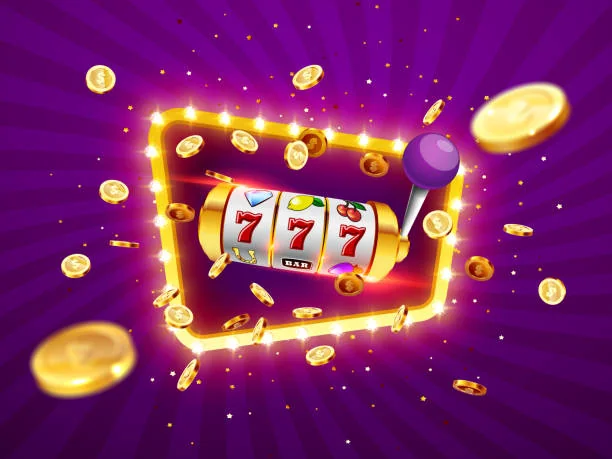Have you ever asked yourself how slot games decide when to pay and how much?
Many players enjoy the thrill of spinning reels, but behind that fun lies a carefully structured system. Slot payout structures are not random guesswork. They are based on tested methods, probabilities, and designs that make play exciting and rewarding.
Let’s take a closer look at how these payout systems work in a simple and friendly way.
Table of Contents
ToggleUnderstanding Slot Payouts
Before getting into the science, it helps to know what a payout actually means. A payout is the return a player gets when certain winning combinations appear on the reels.
The amount depends on the paytable, which lists all possible wins for each symbol and combination. Every spin is calculated by random number generators, often called RNGs, which ensure fairness and unpredictability.
This balance of chance and structured payout design is what makes slots both entertaining and reliable. Players know the outcome cannot be influenced, but they also know that wins are real and based on mathematical systems built into the game.
How RNG Works in Payouts
The random number generator is the hidden engine of every slot game. It produces thousands of number sequences every second, and each spin is linked to one of those numbers. This is what creates fairness. No one can predict the result, but the structure makes sure the wins align with the paytable.
Role of Paylines in Payouts
Paylines are the paths across the reels that determine winning outcomes. Traditional machines might have a single line, while modern online slots can have hundreds or even thousands. The more paylines a game has, the more ways there are to match symbols, which adds variety to how payouts happen.
The Math Behind Return to Player (RTP)
Another key part of slot payout structures is RTP, or return to player. This is shown as a percentage and represents how much of the money wagered is expected to be returned to players over time. For example, a slot with an RTP of 96% means that, on average, for every 100 coins played, 96 are returned in winnings.
It’s important to note that RTP works over a long period, not in one sitting. What it does give is confidence that the game is designed to return winnings in a fair and balanced way. This builds trust and helps players enjoy the game, knowing it is mathematically structured.
Why RTP Matters for Players
- It gives transparency about how a slot performs over time
- It helps players choose games that fit their playing style
- It shows that payouts are not random guesses but based on tested values
Understanding Volatility in Slots
While RTP looks at long-term return, volatility focuses on the style of payouts. Volatility explains how often and how big wins may come. Some slots give smaller wins more often, while others give larger wins less often. Both are part of payout structures, and players can choose depending on what kind of play they enjoy.

Types of Volatility
- Low volatility: More frequent but smaller wins, keeping play steady
- Medium volatility: A balance of both frequent wins and occasional big payouts
- High volatility: Less frequent wins, but when they arrive, they are much larger
This system gives players a choice, letting them enjoy the kind of payout rhythm they prefer.
The Importance of Paytables
Every slot has a paytable that clearly explains how payouts work. It lists all symbols, their values, and special features like wilds or scatters. By looking at the paytable, players can understand the payout system before spinning.
This structured information adds clarity and helps players know exactly what they can expect from different combinations. It’s like having a rulebook that makes the science behind payouts easy to see.
Special Features and Bonus Rounds
Modern slots often include special rounds that add more excitement to payouts. These may include free spins, multipliers, or symbol expansions. Each of these features is built with clear payout rules, and they give players more opportunities to win while keeping the play fresh and enjoyable.
Why Payout Structures Feel Rewarding
The reason slot payout structures feel exciting is because they are built on psychology as well as math. Wins of any size trigger positive responses. Even small payouts keep motivation alive and make the game fun. The combination of frequent smaller wins with occasional big rewards makes the experience lively and balanced.
The Balance of Fun and Fairness
Slot payout systems are not just about money. They are about keeping the game fair and entertaining. The science makes sure wins are spread out in a way that feels rewarding, so players stay engaged while knowing that fairness is always part of the system.
Responsible Play and Slot Structures
The payout structure of slots also helps encourage balanced play. Since every win and spin is based on clear systems like RTP, RNG, and volatility, players can make informed choices. The structure removes guesswork and keeps play transparent. This kind of balance makes slots enjoyable for long periods without stress.
Benefits of Understanding Payout Science
- Players can choose games that match their style
- It builds confidence in fairness
- It helps manage expectations in a fun and informed way
Conclusion
Slot payout structures are a blend of math, fairness, and design. From RNG ensuring random outcomes, to RTP showing long-term returns, and volatility giving different rhythms of play, each part plays a role in making the experience exciting and fair. Paytables and bonus features add even more variety, keeping things fresh and enjoyable. When players understand how the system works, it not only makes the game more fun but also builds trust in the fairness behind each spin. This science is what keeps slot games lively, entertaining, and rewarding for everyone who plays.





